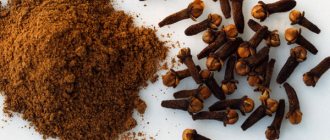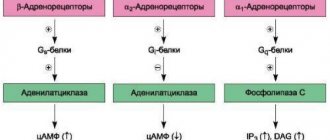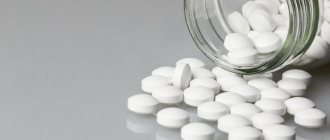Article for the “bio/mol/text” competition: Many drugs compete with natural molecules to bind to their target. Most of these drugs bind to proteins through weak interactions, but some are able to form strong bonds, “switching off” their target until the end of its “life,” albeit at the cost of their own. Such drugs belong to the class of irreversible covalent inhibitors, figuratively called suicide inhibitors. They will be discussed in our article. How do some of the most effective drugs work and how dangerous are they? Whose disease helped discover aspirin? What do nicotine and grapefruit juice have in common? You will find answers to these and many other questions below.
Description of inhibitors
What is a corrosion inhibitor? Corrosion inhibitors are special substances that stop (delay) the process of chemical and physical reactions. Corrosion inhibitors occupy a special place among such substances.
Inhibitors include agents that form a special protective film on the metal surface, which is obtained during the reaction of an inhibitor solution and corrosion products.
The emergence of compounds that slow down corrosion processes was a breakthrough. At the moment, most methods of protection are protection using inhibitors. The most popular substances in this capacity are amines, nitrogen-containing substances, urea, sulfides, aldehydes, etc.
The effectiveness of protective processes involving inhibitors directly depends on the metal, the characteristics of the external environment, pressure on the material, etc.
It is worth noting that the corrosion inhibitor protection does not work constantly; when the additive gets into the solution, it gradually dissolves, so in the future it is necessary to add it to an aggressive environment in small portions.
1st generation drugs
The first generation ACE inhibitors were developed in the mid-70s of the last century. Despite their high effectiveness, they are characterized by a large number of side effects. Therefore, it is very important not to deviate from the dosage recommended by the doctor. Using ACE inhibitors on your own, the list of drugs for which is not very large, is strictly prohibited.
Representatives of the first group are the following drugs:
- Captopril. The product guarantees a rapid reduction in blood pressure and is suitable for use in emergency situations. To avoid serious side effects, it can only be used in small doses. This is the only drug that is used to relieve hypertensive crisis.
- Benazepril. The medicine has a milder effect and can be used to correct blood pressure in moderate stage hypertension, as well as in congestive heart failure.
- Zofenopril. The most gentle drug with minimal side effects and antioxidant effect. But at the same time, it is indicated for use only in the initial stages of arterial hypertension.
Types and uses of metal corrosion inhibitors
The main types of inhibitors include:
- Cathode – reduce the rate of cathodic interaction.
- Anodic - inhibit the dissolution of the anode.
- Mixed - additives that slow down reactions, both cathodic and anodic.
There is a classification of inhibitors by origin:
- Organic are organic substances that are more versatile because they reduce the rate of cathodic and anodic reactions. These include nitrogen, sulfur, oxygen, and aromatic compounds. The main advantage and difference from inorganic inhibitors is the fact that organic substances are adsorbed only on the surface of the material, without reacting with rust.
- Inorganic corrosion inhibitors, what are they? They contain inorganic substances as part of the inhibitor. The peculiarity of working with inorganic particles in an inhibitor is that if the concentration is incorrectly selected, they may not protect the metal by forming a thin film on it, but rather react with corrosion products and accelerate the destruction process. Includes chromates, sodium and potassium bichromates, calcium bicarbonate, etc.
The principle of action of inhibitors
Classification of inhibitors by mechanism of action
Main types:
- Working in an acidic environment - amines, acetylene alcohols, sulfur-containing compounds, aldehydes. This type of substance is used in the gas and oil production industries; they cover pipelines carrying gas or oil products, as well as products involved in these processes. An acidic environment corrosion inhibitor actively fights cathodic and mixed destruction.
- Inhibitors for neutral environments - phosphates, nitrites, amino acids, chromates, alkylphosphates, sulfonates. They are most widely used in the field of water supply, cooling, and are used on marine vessels. Here, as elsewhere, the inhibitor solution is used as a protective coating for any products of the listed industries, containers, load-bearing structures, and individual elements.
- Occurring in an alkaline environment. The substances are involved in the composition of special detergents. Their action is based on the fact that they reduce the strength of current in its chemical sources. Inhibitors for such purposes are most often used together with cations.
Common Types of Acid Inhibitors
The most economical anti-corrosion inhibitor is acidic. Its consumption in the process of metal etching is minimal, which entails a reduction in the cost of the product and the protection procedure as a whole.
The properties of acid inhibitors can also be supplemented by the fact that when applied to a material, it also cleans it of the formed scales and various oxide films. Also, the additive does not change its properties, is not transformed, and is not destroyed when the ambient temperature increases.
On the domestic market you can most often find such corrosion inhibitors as I-5-V and I-5-VM. These additives are intended for products made of low-carbon, medium-carbon and high-carbon and alloy steels. They are effectively used in industry, and both inhibitors can be combined with each other.
The use of corrosion inhibitors with this composition reduces metal waste, helps clean the surface of the etched material, and also has a beneficial effect on sanitary and hygienic working conditions.
Properties of corrosion inhibitors
All properties of inhibitors are reduced to anti-corrosion protection of metal products. The mechanism of operation is simple: the inhibitor contained in the solution is applied to the surface of the element and protects it from the external influence of aggressive environments. Protection is created by adsorption (increasing the concentration of the inhibitor in the solution and on the surface of the material, respectively) on the metal element. After the appearance of the protective film, its main task is to be completely neutral to external influences, not to change its properties under pressure, temperature, etc., only in this case will the inhibitor be able to fully demonstrate its properties and protect the structure as a whole.
Is there a future for irreversible covalent inhibitors?
For many years, irreversible inhibitors were surrounded by an aura of skepticism, stemming from the toxicity of some members of this group discovered in the 1970s. But the effectiveness and selectivity of many drugs in this series have proven that fears regarding them were not justified. Of course, they have potential danger due to the possibility of nonspecific interactions and allergic reactions, but clinical practice shows their indispensability in the treatment of a number of diseases. Now the number of drugs in this group is growing steadily [6].
The difficulty is that the researcher must pursue several goals at once: increase the selectivity of the drug to the target enzyme and carefully consider the mechanism of its action. But the properties of irreversible covalent inhibitors, such as high selectivity and efficiency, long duration of action, and a reduced risk of developing drug resistance, make this group of drugs an indispensable tool in the arsenal of doctors and drug developers [6].
Cathodic corrosion inhibitor
This type of additive slows down the dissolution of metal during the cathodic process. The system potential moves from its usual neutral state to the negative side, which leads to a decrease in the corrosive current, and an anti-corrosion film is formed on the surface. This film is difficult to dissolve not only under normal conditions, but also for many aggressive environments. It becomes a barrier between the external environment and the metal, maintaining its integrity.
What is cathodic inhibitor corrosion protection? Most often, these are compounds that increase the acidity of the environment, which reduces the possibility of metal dissolution.
Cathode additives are not used in acidic environments, as they are not effective there.
As noted earlier, the inhibitor must be dissolved in some substance before use, the simplest one being water. Experts select the correct concentration of the additive in a given volume of water.
It is worth noting that this type of substance is the least effective in comparison with anodic and mixed inhibitors.
Side effects
Serious side effects while taking ATP inhibitors occur most often during treatment with first-generation drugs. In most cases, there is dizziness, which can cause fainting. Sometimes nausea, vomiting, stool upset and various other dyspeptic symptoms occur.
If the prescribed dosage is exceeded, there is a sharp decrease in blood pressure below normal, problems with kidney function or hyperkalemia. While taking ACE inhibitors of any generation, a dry cough or allergic reactions may occur. Very rarely, cases of angioedema have been reported with monotherapy. If such symptoms appear, you should immediately consult a doctor.
Anodic corrosion inhibitors
These substances are passivators - substances that pass from an active state to a passive state and form a film. This film protects the metal element. Corrosion slows down due to a decrease in the rate of transition of metal ions into the solution, and the area of the anodic areas covered with the film decreases due to their separation.
It is the anodic additives, if you overdo them, that may not reduce, but accelerate the corrosive destruction of the material. Carbonates, silicates, phosphates, and sodium nitrite are popular as anodic corrosion inhibitors.
Application of inhibitors in the oil and gas industry
Oil and gas are quite aggressive environments, as they contain caustic substances that can corrode materials and adversely affect human health. Based on this, special additives for the protection of metal structures are used at any stage of oil and gas production, transportation, storage and operation. An important aspect is that it is advisable to use the same inhibitor at all these stages.
In addition to protecting the metal, impurities can be added to the petroleum products themselves, which make it a less aggressive environment: anti-corrosion paraffin inhibitors, anti-ignition agents and anti-foaming agents. The most common substance for protecting main oil and gas pipelines is amine-based compounds.
Introduction
Gout is the most common inflammatory arthritis in adults [1], the prevalence of which has continued to increase over the past decades [2, 3].
The main goal of gout treatment is to achieve and long-term maintenance of target uric acid (UA) levels through the use of both drug and non-drug therapies. And although the fundamental principles of gout therapy have remained unshakable over the past decades, the development of medicine and the accumulated clinical experience suggest the need for constant correction of existing recommendations.
The article highlights some controversial issues in the treatment of gout that have been discussed in recent years.
Use of urate-lowering therapy during an acute attack of arthritis
The question of when therapy should be prescribed has never been widely discussed in the literature; however, it is generally accepted that urate-lowering drugs should be initiated only after complete relief of arthritis, and preferably after 2 weeks [4]. A similar principle is presented in the Portuguese guidelines for the treatment and diagnosis of gout [5]. However, such tactics often lead to unsatisfactory results. Firstly, after the exacerbation subsides, patients trained to independently take anti-inflammatory drugs to relieve subsequent attacks of arthritis often neglect the need for repeated visits to the doctor and urate-lowering therapy will simply not be prescribed; and secondly, having received information about its negative impact on the course of current arthritis, patients in the future tend to discontinue urate-lowering drugs during the occurrence of such attacks or completely avoid taking them [6, 7].
The updated recommendations of the European League Against Rheumatism, mentioning the problem, indicate that there is not yet enough data to make a specific decision on the timing of starting urate-lowering therapy [8]. This is not entirely true. Thus, recent studies allow us to be skeptical about the need to pause when prescribing urate-lowering drugs. In a randomized, double-blind, placebo-controlled, single-center study, TH Taylor et al. 57 patients with an acute attack of gouty arthritis were included, randomized into 2 groups: taking allopurinol at a starting dose of 300 mg/day or placebo. To relieve arthritis, all patients were prescribed indomethacin 50 mg 3 times a day for 10 days, followed by colchicine 0.6 mg 2 times a day for 90 days to prevent attacks.
From the 11th day of observation, all patients from groups 2 also received allopurinol; the study has been open-label since then. When analyzing the average daily pain intensity on a visual analogue scale (VAS) on a 10-point scale in the first 10 days of observation, even minimal differences in the groups were not obtained; moreover, by the end of observation, the average values of pain intensity in the allopurinol group were even slightly less (0 .18 mm in the allopurinol group versus 0.27 mm in the placebo group; p=0.54). A further 3-month follow-up did not record any differences in the frequency of acute attacks recorded in 2 patients taking allopurinol and 3 patients taking placebo (p = 0.6). Thus, the use of allopurinol during an acute attack of gout was not associated with an increase in pain intensity during the current attack, nor with an increase in the frequency of recurrent flares compared with patients who were prescribed allopurinol after relief of arthritis [9]. A similar placebo-controlled study showed that the use of allopurinol during an acute attack did not affect not only the intensity of pain, but also the duration of the current exacerbation [10]. This fact is especially important given the fact that the time spent on relief of arthritis can significantly delay the start of urate-lowering therapy. Interestingly, there were no differences in mean serum sUA levels between the allopurinol and placebo groups at either 14 days (during which the allopurinol dose was 100 mg/day) or 28 days (the allopurinol dose was 200 mg/day). It is likely that slow titration of the drug dose does not lead to sharp fluctuations in serum UA levels, thereby reducing the risk of exacerbations of arthritis.
This opinion about the need to take urate-lowering drugs without waiting for relief of an acute attack of arthritis is supported by the patients themselves, arguing that it is possible to quickly control gout by achieving serum UA levels as quickly as possible [11]. However, if the patient has concerns about the use of drugs during an attack, it is rational to delay the initiation of urate-lowering therapy until the attack resolves.
Use of concomitant prophylactic anti-inflammatory therapy
It is known that taking any drugs that reduce the serum level of sUA, regardless of their mechanism of action (allopurinol, febuxostat, peguricase, benzobromarone) is associated with an increase in the frequency of arthritis attacks in the first months of such therapy [12]. At the same time, the use of symptomatic anti-inflammatory therapy through long-term use of non-steroidal anti-inflammatory drugs (NSAIDs), colchicine or glucocorticosteroids (GCS) can reduce the risk of exacerbation during initiation and dose selection of urate-lowering drugs [13, 14]. The main question under discussion is which specific drugs are best to use for this purpose.
The most popular recommendations are from the European League Against Rheumatism, where the choice of a specific drug for the prevention of arthritis attacks is at the discretion of the physician and includes the prescription of low-dose colchicine or NSAIDs (also in the minimally effective anti-inflammatory dose, with gastroprotective therapy if necessary) [8].
A broader list of drugs is proposed in the latest recommendations of the American College of Rheumatology, where, if there are contraindications to the use of NSAIDs and colchicine, it is worth considering the possibility of prescribing low doses of GCS [11].
Contrasting with them are the recommendations of French rheumatologists, who are limited to the use of only low doses of colchicine for the prevention of arthritis attacks [15].
On the one hand, colchicine is indeed the most fully studied in terms of its ability to reduce the likelihood of arthritis attacks when initiating urate-lowering therapy and, even at a high cost, is economically feasible, according to a study by PC Robinson et al. [16].
However, it is not always possible to prescribe the optimal dose of colchicine, especially in patients with chronic kidney disease (CKD); the drug is not always well tolerated given the occurrence of nausea and diarrhea, and when taken together with HMG-CoA reductase inhibitors, fibrates, verapamil, diltiazem, clarithromycion, etc. may increase the risk of developing acute myopathy and aplastic anemia, especially in old age [17–19].
In any case, the choice of a specific drug must be conscious and justified. At the Federal State Budgetary Institution NIIR named after. V.A. Nasonova is conducting a prospective study to compare the effectiveness and safety of various anti-inflammatory drugs used to prevent arthritis attacks. A dynamic examination of 97 patients with gout was carried out over 24 weeks, which included the continuous use of combined urate-lowering and preventive anti-inflammatory therapy.
When initiating urate-lowering therapy, allopurinol 100 mg/day was prescribed, followed by titrating the dose until the target sUA level was achieved, which was defined as <360 µmol/l for all patients or <300 µmol/l for patients with severe tophi gout. A feature of the study was the use of allopurinol and febuxostat in the maximum permissible doses, strictly based on existing national clinical guidelines.
Anti-inflammatory therapy was prescribed according to the algorithm presented in the figure.
Anti-inflammatory therapy was carried out based on the algorithm proposed by the authors, which included the sequential use of colchicine 0.5 mg/day, in case of contraindications and/or poor tolerability - NSAIDs in the minimum effective anti-inflammatory dose, in case of intolerance or the presence of contraindications - GCS (prednisolone 7.5 mg/day).
As a result, only 12% of patients could not receive preventive anti-inflammatory therapy, while among them the likelihood of developing an acute attack of arthritis was 2.5 times higher than among those taking the above drugs (75 vs. 35%, respectively; p = 0.008).
When comparing individual groups of anti-inflammatory drugs, NSAIDs turned out to be significantly more effective than colchicine and corticosteroids in terms of the frequency of arthritis attacks and their duration (p <0.05 in both cases), and the intensity of pain according to VAS after 6 months of observation did not differ significantly between groups (NSAIDs, GCS, colchicine).
There were no significant differences between different groups of anti-inflammatory drugs in the incidence of side effects, which is consistent with the results of similar studies [19, 23].
Choice of urate-lowering therapy
In the Russian Federation (RF), only two drugs are currently registered for the treatment of gout, both are xanthine oxidase inhibitors, but even with such a small choice, the principles for prescribing these two drugs differ in various international and national recommendations.
The first recommendations that discussed the possibility of prescribing febuxostat were the recommendations of the American College of Rheumatology, published in 2012, where the decision on the choice of a specific drug - allopurinol or febuxostat - was supposed to be made individually [24]. In 2021, the randomized, prospective, multicenter CARES (Gout and Cardiovascular Morbidities) trial found higher rates of cardiovascular and all-cause mortality among patients with gout treated with febuxostat compared with allopurinol [25]. However, a number of issues discussed, along with the results of methodological limitations of the study, do not allow a clear conclusion about the benefits of allopurinol [26–28], and several other studies did not find any differences in relation to the cardiovascular safety of the drugs [29, 30]. For example, in a study by J. Foody et al. The frequency of cardiovascular outcomes was analyzed in patients with gout with the presence of cardiovascular diseases and CKD who took allopurinol and febuxostat [31]. Thus, the incidence of adverse cardiovascular outcomes in patients with gout and CKD or cardiovascular diseases, including coronary artery disease, cerebrovascular disease, peripheral vascular disease and CHF, when taking febuxostat was almost 1.5 times less than in patients taking allopurinol , and the differences were significant.
If initially it was planned to limit the use of febuxostat as much as possible, even to the point of banning its use [32], then today the attitude towards the drug has begun to change in the opposite direction. Thus, in accordance with the latest recommendations of the American College of Rheumatology (ACR - American College of Rheumatology), allopurinol should be prescribed to all patients, including patients with moderate to severe CKD (stage ≥3), however, even in the presence of cardiovascular pathology, febuxostat should be prescribed not recommended only “conditionally” [11].
An even wider niche for the use of febuxostat in patients with gout is defined in the recommendations of the French Society of Rheumatology, where its use is justified in the case of a decrease in eGFR <60 ml/min/1.73 m2, provided the patient does not have severe cardiovascular pathology, and with eGFR <30 ml/min/1.73 m2 its administration is a priority over allopurinol [15].
X. Liu et al. A prospective study was conducted that included patients with hyperuricemia and CKD stages 3–5, which assessed the ability to achieve target UA levels and renal function [33]. 112 patients were treated with febuxostat and allopurinol in 96 patients. After 6 months of therapy, the target sUA level was achieved in 96.4% of patients receiving febuxostat and 37.5% receiving allopurinol, while eGFR in the febuxostat group increased from 28.45 to 30.65 ml/min/1.73 m2 and decreased from 28.06 to 24.39 ml/min/1.73 m2 in patients taking allopurinol.
Febuxostat can be used in patients with gout and CKD at doses of 80 and 120 mg/day without the need for their GFR adjustment, and with caution if eGFR is <30 ml/min/1.73 m2. Thus, in a study by SH Kim et al. febuxostat has been shown to have a good safety and efficacy profile in patients with gout in stages 4–5 CKD who are not already on dialysis [34].
In general, taking into account the low cost, sufficient effectiveness and good tolerability of allopurinol, incl. high doses of the drug, there is no doubt about the advisability of its use as a first-line drug of therapy. However, in patients with severe CKD, the use of febuxostat seems to be preferable. A similar approach is supposed to be used in practice, based on domestic recommendations [35].
Use of interleukin-1 (IL-1) inhibitors
On the one hand, the use of IL-1 inhibitors has been considered for almost 10 years as one of the components of the treatment of an acute attack of arthritis, however, the possibility of their actual use is still quite modest, because in many countries they are either not registered or gout is not mentioned as an indication for their use. The ACR and EULAR (European League Against Rheumatism) recommendations suggest the use of IL-1 inhibitors solely for the purpose of relieving an acute attack of arthritis [8,11], however, the domestic version of the clinical recommendations considers the possibility of prescribing them to patients with chronic severe gout and as a method of preventing exacerbations of arthritis [35].
In a study by N. Schlesinger et al. the effectiveness of different doses of canakinumab (25 mg, 50, 100, 200 or 300 mg) and colchicine 0.5 mg/day was compared [36]. At 16 weeks, there was an average 67% reduction in the incidence of arthritis in patients treated with canakinumab ≥50 mg compared with colchicine based on a negative binomial model (rate ratio: 0.28 to 0.38; p≤0.0083) , and the risk of having at least one attack of arthritis was 64–72% lower.
D. Solomon et al. compared the incidence of arthritis attacks when using urate-lowering drugs in patients with different initial serum sUA concentrations (≤404.5 µmol/l, 404.6–535.3 and ≥535.4 µmol/l) [37]. The treatment was canakinumab (50 mg or 150 or 300 mg by subcutaneous injection), which was administered every 3 months, with a follow-up period of almost 4 years. Quarterly administration of canakinumab was associated with a significant reduction in the risk of developing gout attacks, independent of changes in serum sUA levels.
A large post-marketing study was also conducted in our country [38]. Twenty patients with acute arthritis and failure of previous anti-inflammatory therapy were prescribed subcutaneous canakinumab at a dose of 150 mg. Over the next 4 months, the dose of allopurinol was titrated, while the target level of sUA was achieved in 85% of patients, attacks of arthritis were extremely rare, and additional symptomatic therapy was required in only 15% of patients. Moreover, a retrospective analysis after 5 years showed that patients previously treated with canakinumab were more likely to maintain target sUA levels when taking urate-lowering drugs than those who received standard anti-inflammatory therapy (75 vs. 20%, respectively; p = 0.005) [ 39].
Although this group of drugs continues to be considered as a “therapy of desperation” by patients with the most severe course of gout and the presence of contraindications to other symptomatic treatment of the disease, both the presence of high efficacy and preventive effect in relation to cardiovascular outcomes [40] suggests great potential their practical use.
Diet therapy
The role of nutritional therapy in the treatment of gout is being reconsidered. If earlier, for example, in the recommendations of the European League Against Rheumatism, lifestyle and diet were the first point and were presented as a fundamental component of successful treatment of gout [41], but now in the updated recommendations of the ACR or the Interdisciplinary Consensus on the Treatment of Gout and Hyperuricemia of Taiwan, limiting the consumption of those or other products are either recommended “conditionally” [11], or the fact of low effectiveness of diet changes and the priority of drug therapy is simply recognized [42].
In a study by TJ Major et al. Genetic changes have been shown to be much more important in the development of hyperuricemia than the effects of diet, for example, one unit of beer increased serum UA concentrations by only 0.16 mg/dL [43]. Although another study showed that alcohol consumption, even in moderate quantities, increases the risk of developing arthritis attacks after consumption, regardless of the type of alcoholic drink [44].
The use of serum and vitamin C to reduce UA levels is also considered irrational. In a study by LK Stamp et al. it was shown that the use of vitamin C 500 mg/day in patients with gout for 8 weeks did not have a significant urate-lowering effect, despite the fact that the level of ascorbate in the blood plasma increased [45].
Many studies examining changes in serum UA levels depending on a decrease in body mass index (BMI) also did not reveal significant changes [46, 47]. At the same time, it has been shown that an increase in BMI by more than 5% is associated with a higher risk of relapse of acute arthritis by 60%, and a decrease in BMI>5% with a lower one by 40% compared with those whose BMI did not change [ 48]. According to the results of a long-term retrospective analysis of clinical manifestations in patients with gout, isolated dieting without taking urate-lowering drugs did not lead to the achievement of the target serum uric acid level in any of 18 cases, although the average body weight decreased [6].
The ACR recommendations, among other postulates, also formulated conditionally “informal” recommendations, one of which calls for avoiding the formation in patients of a feeling of guilt due to a suboptimal lifestyle and the stigmatization associated with it. It is necessary to be extremely careful when asking a patient about his eating habits: the patient should not feel even the slightest “blame” and condemnation from the doctor. At the same time, it is necessary to convey to the patient that, although diet correction leads to only a minimal decrease in sUA levels, its violation can serve as a risk factor for arthritis attacks [11].
Thus, we can talk about a shift in this vector of treatment for gout: diet therapy can lead to only a slight decrease in the serum level of sUA, its main goal is to reduce the frequency of exacerbations of arthritis.
Conclusion
Thus, according to modern ideas, we can generally formulate several proposed positions in the treatment of gout that differ from the canonical ones.
All patients with an established diagnosis of gout should be prescribed urate-lowering drugs in order to achieve the target level of sUA, which should be initiated without waiting for a 14-day period after the exacerbation has subsided.
Allopurinol should still be considered as first-line urate-lowering therapy, but febuxostat is preferred if the patient has CKD.
Prevention of arthritis attacks should be carried out with the use of colchicine, NSAIDs or corticosteroids, considering the possibility of using each in the specified sequence, and, perhaps, in the case of contraindications and ineffectiveness of these drugs, the use of IL-1 inhibitors should be considered, at least in patients with severe gout.
Diet therapy is solely an auxiliary method that helps reduce the likelihood of exacerbation of arthritis, but should not be considered as an effective means of combating hyperuricemia.
Conflict of interest. The work was carried out as part of the applied scientific research “Technology for the use of various anti-inflammatory drugs for the prevention of arthritis attacks when prescribing urate-lowering therapy in patients with gout” (No. 2020-397-007). The authors did not receive any royalties for the article. M.S. Eliseev confirms that he receives fees for lecturing.
Use of inhibitors at home
Corrosion processes affect not only metal products in industrial and construction industries, but also any metal products in our home, as well as machines and devices.
The simplest home remedy with an inhibitor is a primer. As always, the surface must be prepared and then primed with a spatula or brush. The primer creates a protective layer on the product, separating the metal and the environment.
Some paint coatings also contain inhibitors.
The simplest and most understandable inhibitors for household use are minium (red lead paint) added to the primer, iron or zinc orthophosphates added to the solution, etc.
Red lead paint
Diabetes
Nobody takes glucose-lowering drugs for nothing. This is the most important point in the treatment of diabetes mellitus, a disease that is associated with hyperglycemia. In a healthy person, blood sugar levels are fairly constant and should not go beyond certain limits, regardless of periods of eating or fasting. It is believed that it can range from 2.5 mmol/l to 8 mmol/l.
Previously, when there was no treatment for diabetes mellitus, after a few years of illness a ketoacidotic coma could develop and the person would die. Today there are fewer and fewer such cases; medications help prevent sugar levels from rising to life-critical levels. Doctors and patients are faced with a new task - to delay the development of complications and prolong life as much as possible.
Hyperglycemia leads to the development of atherosclerosis, damage to blood vessels and nerves, coronary heart disease, and impaired sensitivity of the limbs. Blindness, gangrene, chronic renal failure, heart attack, and stroke may develop. All these changes accumulate day after day due to high blood sugar levels.
In type 1 diabetes, the pancreatic cells that produce insulin gradually die, so there is only one treatment - regular administration of insulin.
For type 2 diabetes mellitus, both medications and various forms of insulin can be used. Typically, the introduction of insulin on a regular basis occurs when all the possibilities of drug combinations have been used, but there is no effect. It is on an ongoing basis, because insulin can be administered temporarily to relieve the toxic effect of hyperglycemia.
Only for type 2 diabetes can medications be used, not insulin.
Now more about drugs other than insulin.
The use of inhibitors when processing equipment
Corrosion in technology is the greatest threat to human life. Often, a corroded area in a large member is not as bad as corrosion in a bolted joint or weld.
Most often, of course, car owners are faced with the problem of rust and take their cars to a service station so that the specialists themselves can process the material and apply an anti-corrosion coating, whether using inhibitors or not.
The destruction of equipment is difficult to stop, since areas susceptible to destruction are usually difficult to access, treatment with a corrosion inhibitor, and cleaning the affected area is difficult. In inaccessible places, they try to use liquid compounds for better application and distribution - oils, hot bitumen compounds, soft lubricants, etc.
Difficult choice
It is impossible to determine the best drug; they are all just building blocks in an integrated approach. Success in treating diabetes mellitus largely depends on the patient. In order to get the effect of taking drugs, not only the doctor must choose the right regimen and combine drugs, taking into account the risks from the kidneys, heart, and concomitant diseases. A person is required to change their lifestyle, eating habits, exercise, monitor glucose levels daily, keep a diary, and follow a diet. Only together can we achieve stable blood glucose levels.







